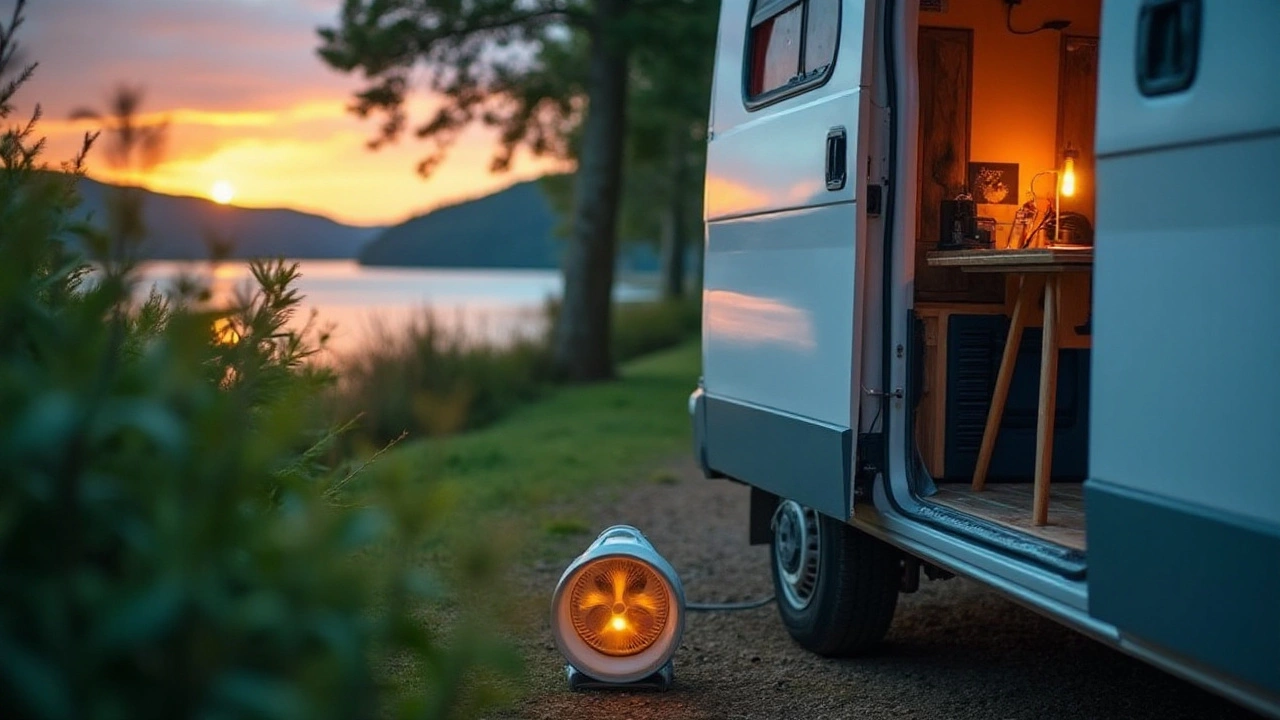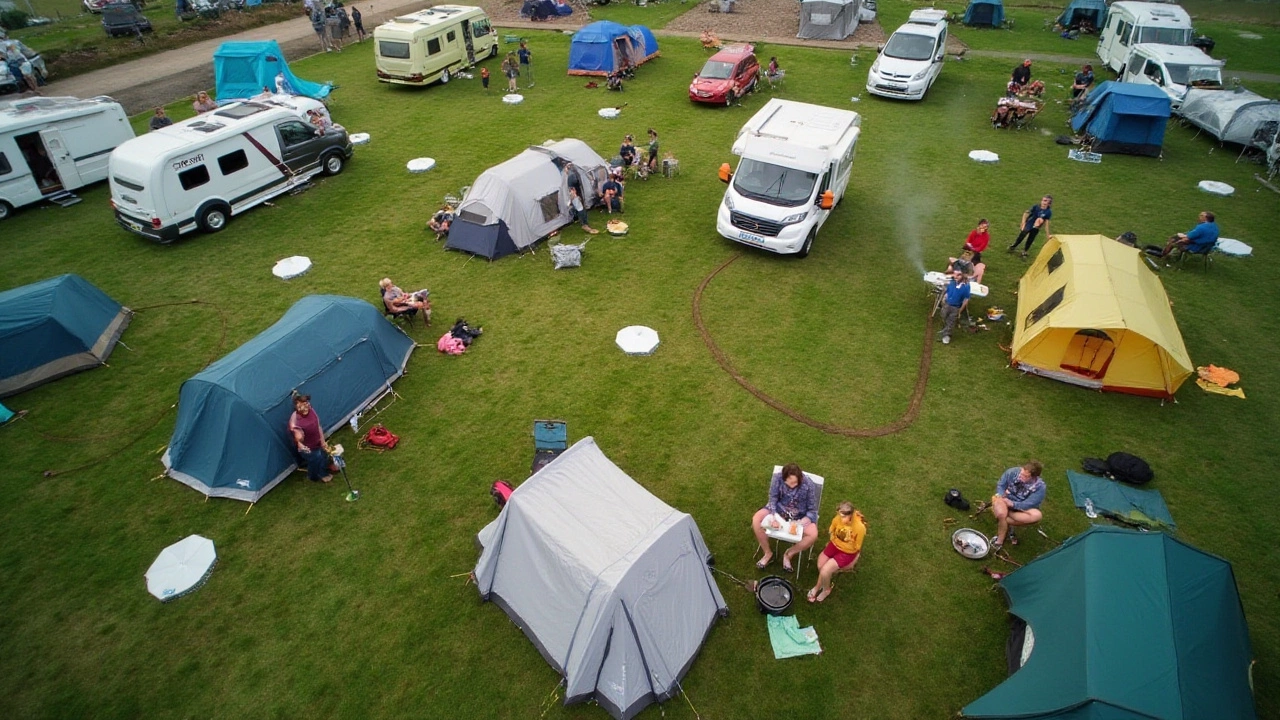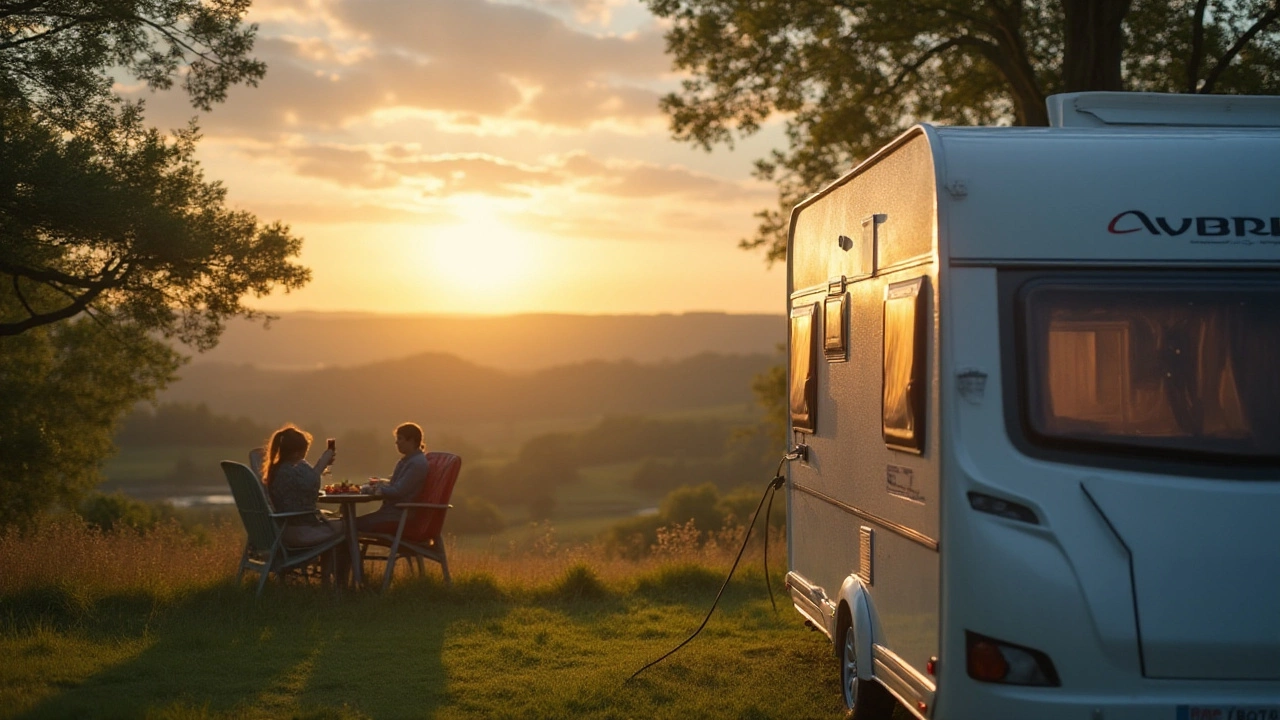Camping has evolved significantly over the years. Gone are the days when camping was merely about setting up a tent and lighting a campfire. Today, many campsites offer electrical hookups, allowing campers to enjoy nature's beauty with some added comforts of home. But what exactly are these hookups, and how do they work?
If you're planning a trip that includes an RV or other electrical needs, understanding campsite hookups can be crucial. From powering your coffee maker to charging your devices, knowing about different electrical options can make your stay both comfortable and memorable. This guide will walk you through the essentials of campsite electrical hookups, helping you choose the best option for your outdoor adventure. We'll cover everything from the most common types to useful tips for staying safe while plugged in out there in the great beyond.
- What are Electrical Hookups?
- Types of Electrical Hookups
- Choosing the Right Hookup for Your Needs
- Safety Tips for Using Electrical Hookups
- Finding the Perfect Campsite with Hookup Options
What are Electrical Hookups?
When you think about camping, images of tents pitched under starlit skies might come to mind. Yet, the modern camping experience has shifted, marrying the beauty of the outdoors with the conveniences of home. One significant part of this evolution is the use of electrical hookups at campsites. So, what exactly are these hookups? Simply put, electrical hookups are systems that provide power to your camping equipment, whether that’s the RV's interior lights or a simple plug for charging your phone. These hookups are generally provided through pedestals or power poles situated at camping spots within an RV park or a campsite, designed to deliver electricity safely and efficiently to those who need it.
On many camping grounds, you'll typically find three common types of hookups: 20-amp, 30-amp, and 50-amp. Each type serves different needs depending on the equipment you’re using. A 20-amp hookup, for example, might be limited but is perfect for small appliances or for tent campers who need minimal power. The 30-amp hookups are generally suitable for smaller RVs or trailers that require more energy for basic appliances. Meanwhile, the 50-amp hookup is aimed at larger RVs requiring serious power for multiple devices, including air conditioners and refrigerators. Knowing the difference between these options can help ensure you choose the right campsite based on your specific needs, making your outdoor experience as seamless as possible.
Understanding these systems is essential, as mains electricity supplied through these hookups is essentially what you use at home—typically 120 volts in the U.S. This means that the safety precautions you take with electricity at home should certainly be applied here. Many campsites have heightened safety measures, regularly checking the setups to ensure they meet electrical codes.
A statement from Carl Brown, a seasoned campsite electrician, underscores the importance, "Many people take the power supply for granted, but maintaining these systems is critical for safety and comfort. Always check that the equipment and connections are in good condition before use."These maintenance checks are part of why using authorized campsites is recommended, especially when compared to setting up camp in unauthorized areas where you might rely on a generator or solar power with varying voltages.
Types of Electrical Hookups
When you think about camping with an RV or just powering up some devices at a campsite, it’s crucial to know about the various electrical hookups you might encounter. There's a broad range, designed to meet different needs and varying power requirements. The most common types you will find are 20-amp, 30-amp, and 50-amp hookups. Each of these serves different purposes and abilities, ensuring that whether you're in a cozy trailer or a fully-loaded motorhome, you can keep energized. The differences might seem slight, but they’re significant enough to make or break your camping experience if you pick the wrong kind.
A 20-amp hookup is generally best for small setups. It’s the same kind of connection that might power a home appliance, so it’s quite basic. These are often utilized by tent campers who need just a little power for a lamp or to charge a phone. On the other hand, the 30-amp hookup is more robust, a good match for most travel trailers and smaller RVs. It's capable of handling more than a few simple devices. This option can power a small air conditioner, refrigerator, and some lights, all at the same time, which makes it a pretty sweet spot for many weekend campers.
For those rolling out in large RVs or luxury motor coaches, the 50-amp hookup is a must-have. It’s specifically designed to handle heavy loads. With this kind of hookup, you can run multiple energy-hungry appliances simultaneously, like a microwave, air conditioner, plus a host of other gadgets that make your RV feel like home. "With the increase in technology and comfort expectations, the 50-amp hookup has become standard for many new RVs," says John Doe, a seasoned veteran in the RV industry.
"Understanding your power needs and the type of electrical hookup available is key to a smooth experience at the campsite," says Jane Smith, author of 'Modern Camping Essentials'.
Understanding the right hookup for your camping needs not only ensures convenience but also enhances safety. Incorrectly estimating your power needs can lead to outages or, worse, damage to your gear. Always take a moment to check your RV's specifications to determine the necessary power requirements. To know what kind of hookup a campsite offers, call ahead or check online listings on their website. Many campsites provide detailed information on their amenities, including the type of electrical hookups available, which allows you to plan accordingly.
Awareness about these camping electrical hookups options and their differences mean you'll be more prepared to select a site that matches your needs. If in doubt, consider purchasing an adapter; these little gadgets can be quite handy if your hookup isn’t perfect. Embracing these details allows for a richer camping experience, where you're more connected to both nature and the comforts of civilization. With the right information, your next camping trip is sure to be electrifying!

Choosing the Right Hookup for Your Needs
Picking the right electrical hookup for your camping trip is central to ensuring you have all the power necessary to keep your gadgets running and comfort intact. The choices often revolve around the specific power requirements of your RV or tent setup. Comprehending your rig's power needs, typically expressed in amps, is the first step. Most campsites offer hookups in 20, 30, and 50-amp varieties, each suitable for different setups. A smaller camping unit might get by with a 20-amp connection, handling basic amenities like lights and charging ports efficiently. In comparison, a larger RV with various appliances and air conditioning will usually necessitate the heftier 50-amp service.
When considering hookup options, it’s essential to evaluate the electrical demands of your equipment. Think about what appliances you plan to run simultaneously. For those who intend to use high-draw items, like a microwave or an electric heater, ensuring enough amperage is crucial to prevent tripped breakers or damaged appliances. Not only should you match the campsite's available power with your demand, but you might want to bring along adapters. These can bridge the gap between your plug and the available source, offering greater flexibility. Additionally, having a power surge protector is wise, as it safeguards your devices from unexpected spikes in electricity.
Looking deeper into what campers often want, outdoor enthusiasts are sometimes surprised by the variety found in campsite hookups. Some prefer just the basic need for a light or a fan; others, however, want to create a mini-home on wheels with TVs, music systems, and full kitchens. Identify your preferences to find a campsite offering the best match. Plus, the serenity of being off-grid might allure some; yet, having the option to recharge essentials like communication devices can be vital for safety and convenience.
Campsite expert and adventurer, John Thompson, says, "Understanding your own power use is a big part of the camping experience. Don't just guess it; really get to know it before you hit the road."Whichever your choice, making sure that you plan ahead to secure the necessary hook-ups will streamline your preparation and leave you more time for enjoying the journey.
Your choice also affects how many campsites will be available to you. Some parks cater only to certain types of hookups. Hence, checking available services in advance is practical. This not only helps prevent disappointment on arrival but also ensures that you're never short on the power you think you'll need. Remember, it’s about making the most out of the camping experience, understanding, and preparing for the right electrical needs to amplify comfort while keeping nature accessible.
Safety Tips for Using Electrical Hookups
When it comes to using electrical hookups at campsites, safety should always be your top priority. It's not just about convenience; it's about ensuring that your camping experience doesn't turn into a hazardous adventure. To start, always bring your own extension cords and ensure they are suitable for outdoor use. Many campers make the mistake of using indoor cords, which can be a real risk in damp environments. Referring to extension cords, the length and gauge are crucial considerations. Opting for a shorter high-gauge cord reduces voltage drop, ensuring your appliances perform optimally without overheating.
Every camper should routinely inspect their equipment. Before plugging in, check cables for any fraying or damage. You'd be surprised how wear can occur, particularly if cords aren't stored properly between trips. Once at the campsite, ensure all connections are tight and secure. Loose connections can cause sparks or short circuits, posing a fire hazard. Moreover, grounding is critical. Many RVs and camping setups include ground fault systems, which trip the connection if any imbalance is detected. This feature can be life-saving, preventing electrical shock.
Water and electricity are a dangerous mix. At campsites, wet conditions are often an unavoidable part of the experience. Always elevate electric cords off the ground if you anticipate condensation or puddles. You might consider using cord protectors or wraps to shield connections from moisture. A simple trap to fall into is overloading circuits. Campsites typically provide 30 to 50-amp hookups, which might not supply enough power for running multiple high-energy appliances simultaneously. Understanding what your specific setup can handle prevents not just a tripped breaker but potential damage to both the campsite's electrical infrastructure and your own equipment.
According to the RV Industry Association, "Always have a surge protector attached to your setup. While campsites strive to regulate power, fluctuations can still occur, leading to potential harm to your RV's electrical system."
Environmental awareness extends to noise pollution. Generators can supplement your power needs but beware of campsite restrictions. Many places have strict quiet hours where generator use is limited. Consider investing in quieter inverter generators if you plan to use one regularly. This keeps the peace with your neighbors and ensures a more serene nature experience for everyone. Most importantly, remember the basic rule: when in doubt, turn it off. If you encounter electrical issues, disconnect until they can be safely addressed. Never attempt to repair live connections yourself unless you're properly qualified.
Educating your fellow campers is an invaluable part of safety. It's remarkable how a brief chat about circuit safety or correct cord usage can prevent future mishaps. Always keep an eye out for helpful signage and posted rules that campsites provide — they are there for your safety. The key to a safe and enjoyable experience with campsites is preparation and mindfulness, ensuring you and your companions can enjoy the beauty of the outdoors securely plugged in.

Finding the Perfect Campsite with Hookup Options
Embarking on a camping trip with access to electrical hookups elevates the whole outdoor experience. But, to make the most out of it, choosing the right campsite is crucial. The first step is to identify your specific needs. Are you traveling with an RV, or are you planning on a tent camping trip with some perks? This decision will determine the type of hookup you'll require. For RV enthusiasts, a campsite that offers both 30-amp and 50-amp hookups can provide the flexibility needed for most modern conveniences, from running an air conditioner to keeping the fridge cool. Tent campers might find a 20-amp hookup ideal just for lighting and charging devices. Always check the maximum amperage your devices need and match them with the campsite's available hookups.
After assessing your electrical needs, research potential campsites and their amenities. Many campgrounds list their features online, allowing you to see whether they provide the desired hookups, Wi-Fi availability, picnic tables, or shower facilities. Websites like Campendium and Hipcamp are excellent resources, offering reviews from fellow campers. Once you've narrowed down your options, it's a good idea to reach out to the campsite directly for the most up-to-date information, especially during peak camping seasons when facilities may change.
“I always prefer sites that offer full hookups, as they make longer stays much more comfortable. I find the online reviews on sites like The Dyrt invaluable when planning our trips,” says outdoor enthusiast Sarah Jenkins.
Location is another important factor. While some might search for campsites nestled in forests for tranquility, others might prefer camps close to attractions like national parks or beaches. A campsite's proximity to groceries and gas stations adds convenience, especially for longer stays. Keep in mind the environment that suits your comfort level and interests. Before making a reservation, it's wise to look at maps or satellite images of the campsite. These can provide added insights into how close your potential spot is to neighbors or main roads, which can impact your experience.
Finally, consider the popularity of a campsite. Some of the best spots can book up months in advance, especially during holiday seasons. Planning ahead and making early reservations can secure a perfect camping experience without hiccups. For spontaneous travelers, opting for first-come, first-serve sites can be an adventure, but always have a backup plan ready. Ultimately, finding the perfect campsite with electrical hookups involves balancing your needs with location, amenities, and reservations. With some preparation, you can ensure a memorable and comfortable outdoor adventure.
